Birthstone information
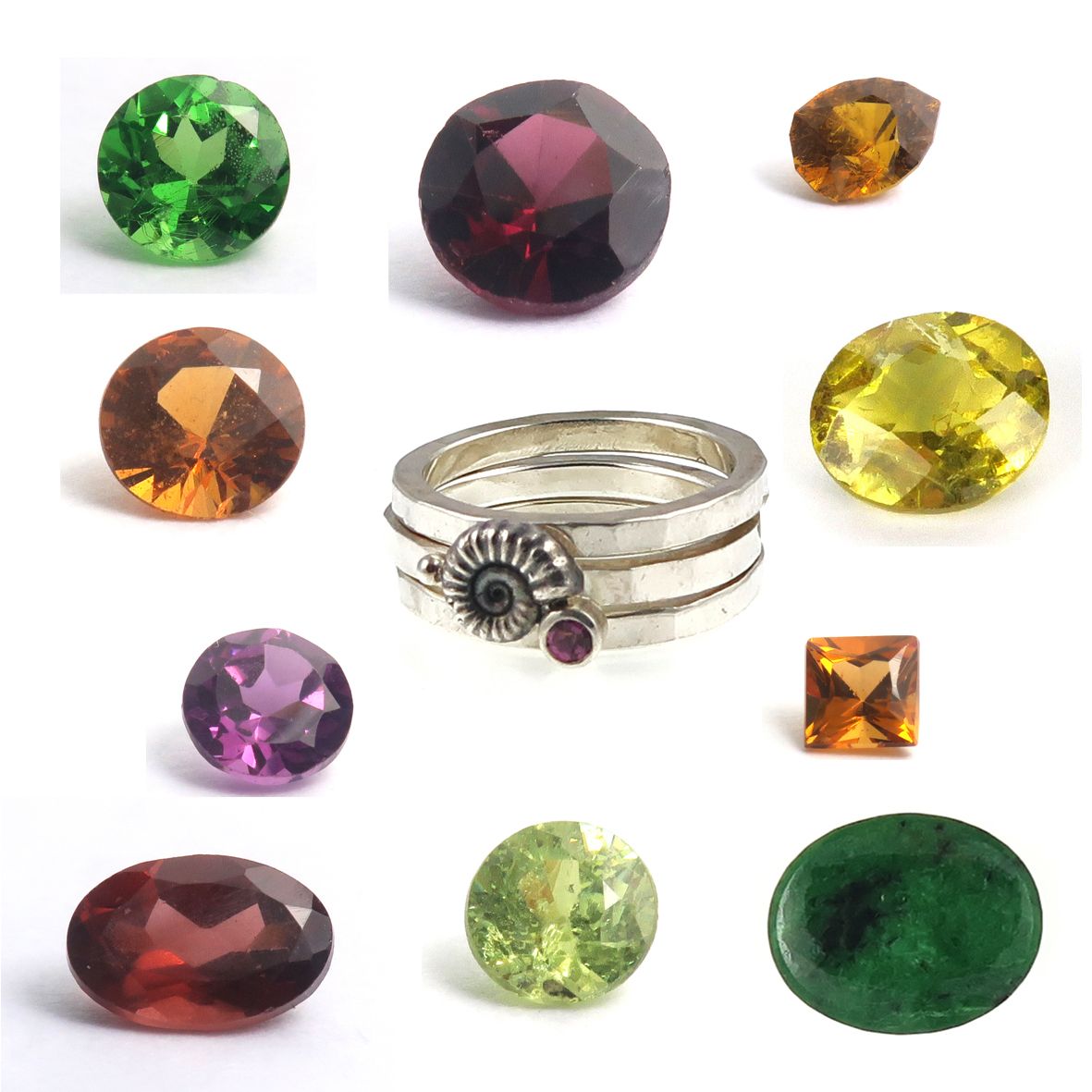
January - Garnet
Not just red gems...
For those who think January babies only get a choice of red or red, think again! Garnet can be found in all colours including rare blue garnet & colour change garnet where the stones appears to be a different colour under different light sources.
So, January babies can choose red pyrope or almandine garnets, pink rhodolite garnets, orange to yellow spessartine, hessonite or Malaya garnets, green or yellow-green demantoid or Mali garnets, green Tsavorite garnets or the rare blue or colour change… Then there are the red garnets that display a star (asterism) which occur when white light reflects from numerous tiny, oriented needle-like inclusions…
Let’s not forget some of the history of garnets from the amazing pieces of garnet encrusted Anglo-Saxon jewellery to the incredible demantoid garnets which were originally found in Russia & used by Faberge.
It is a huge family to choose from & although some are rare, you are not restricted to just plain red!
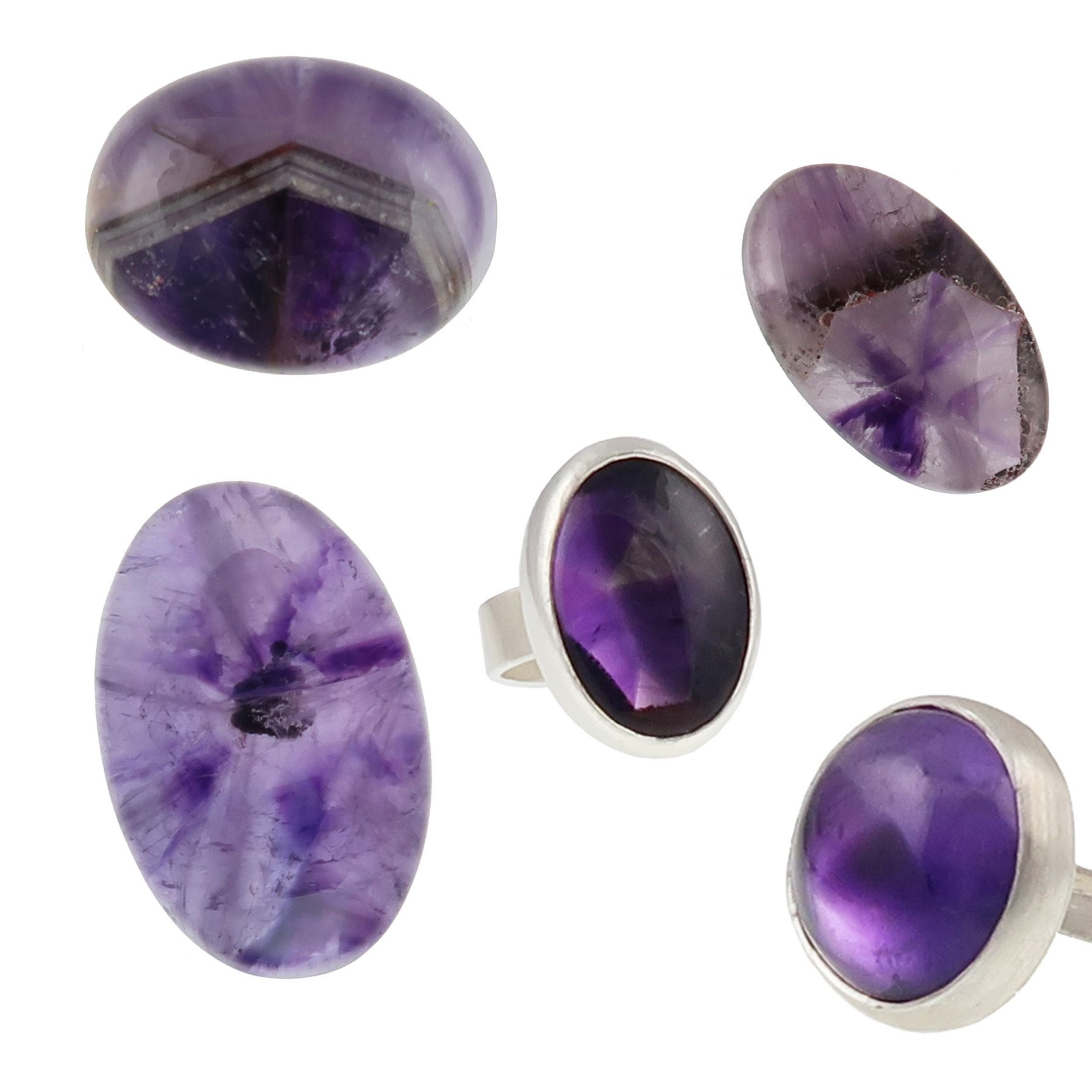
February - Amethyst
Regal purple quartz...
Amethyst is the transparent purple variety of crystalline quartz whose colour comes from the presence of iron impurities within the crystal. A regal colour, February babies can choose from deep, dark, mysterious purple through to the very lightest and softest tones of purple.
It doesn’t stop there though, you could choose a stone that has the distinctive “tiger stripes” of healed fractures, angular colour zoning of various purple tones or a stone that displays the characteristic colourless & purple segment-like colour zoning associated with Brazil twinning…
Please don’t try this at home, but historically wearing amethyst was believed to prevent a person becoming drunk… Until the 19th century discovery of amethyst in Brazil they were as expensive as rubies and emeralds.
A beautiful stone with an interesting history & a lovely selection to choose from!
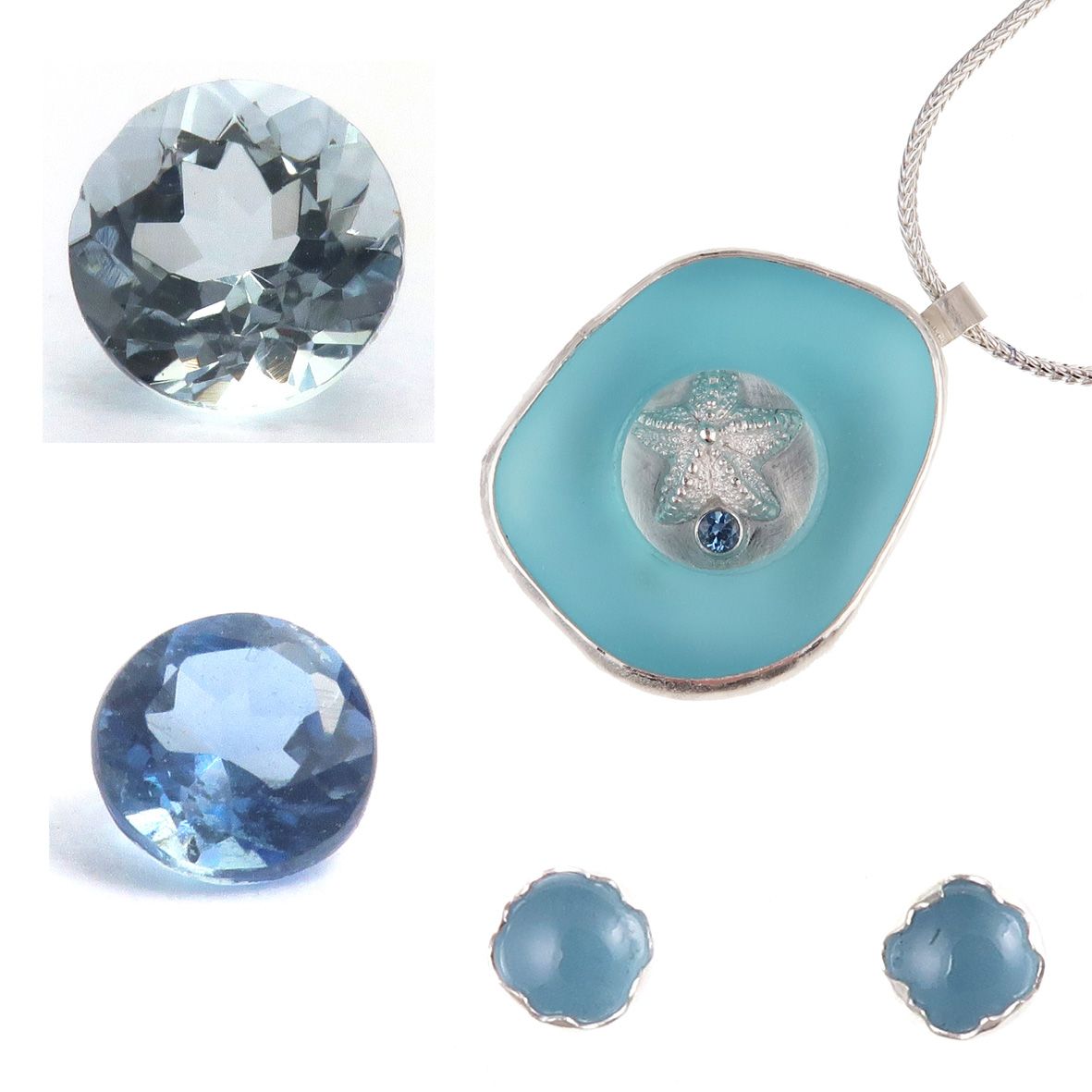
March - Aquamarine
Cool ocean blues...
Cool, oceanic tones for March babies, aquamarine’s name is derived from aqua (water) & marina (of the sea). Aquamarine is the transparent blue to green variety of beryl & may be found as large flawless crystals, some of which have been cut and polished into amazing sculptural objects.
Queen Victoria was an aquamarine fan but in Victorian times they favoured the darker, greenish-blue stones. The current fashion is for a lighter blue stone which can be produced by heat treating greenish-blue stones. This beautiful stone can also be occasionally found displaying a cat’s-eye (chatoyancy) or star (asterism) optical effect which occur when white light reflects from numerous tiny, oriented needle-like inclusions – that would be a very special gift for a March baby!
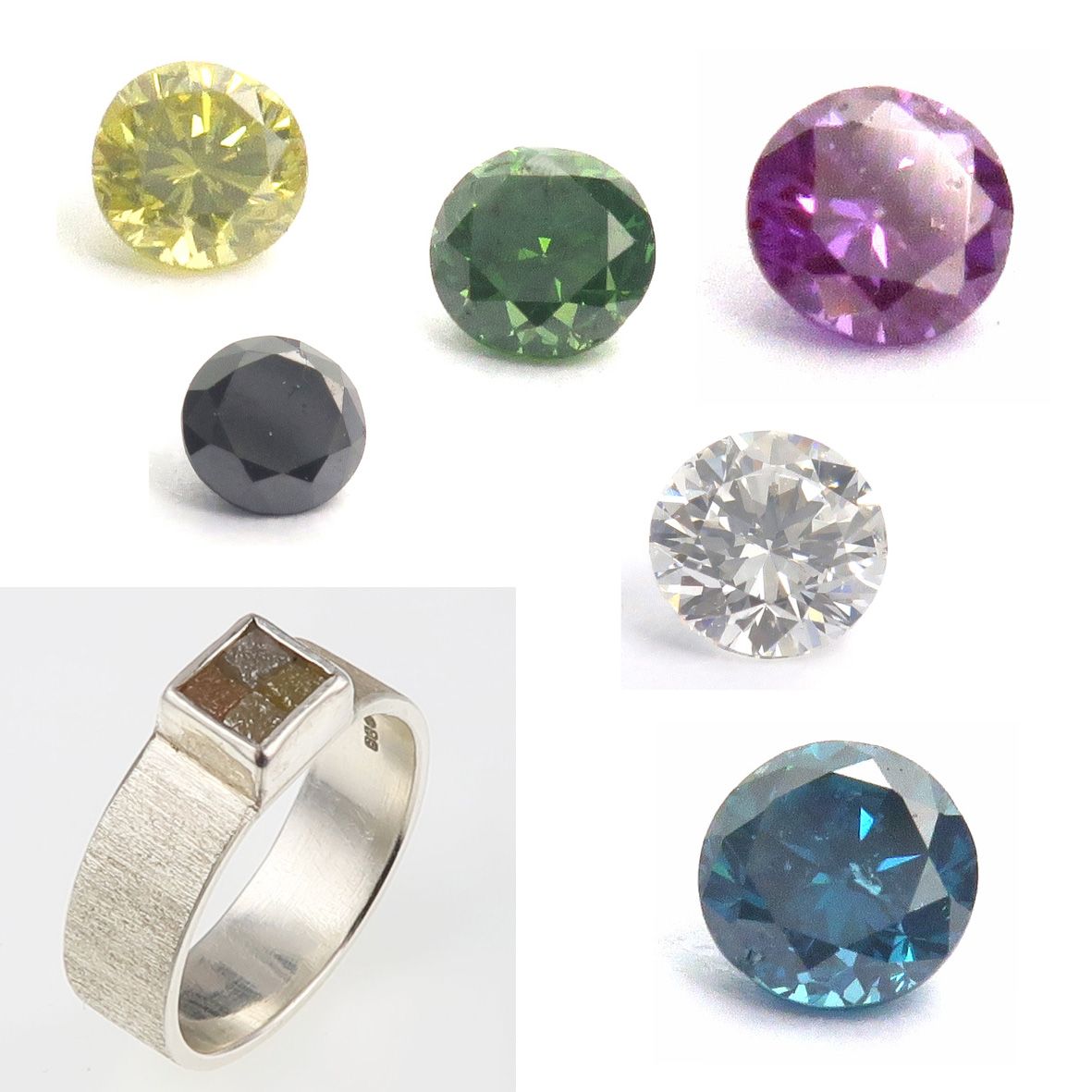
April - Diamond
In its various forms...
What can I say about April babies’ birthstone, you lucky people! While you would once have thought of diamonds as being colourless or near colourless, coloured diamonds are becoming more popular & available due to various treatments that can be carried out on the stones. You could choose from yellow, orange, blue, pink, green, black, purple, brown, red…
Another reason diamond is such a special gemstone is that it is one of only two gems to form within the Earth’s mantle before being transported to the surface by volcanic activity… if it survived the journey without reverting to graphite…
The hardest mineral on Earth, diamond is an enduring symbol of love but why not mix it up a little… what about rough diamonds with their interesting forms & colours – definitely something special & unique in the true sense of the word! Seriously, what a choice you have!
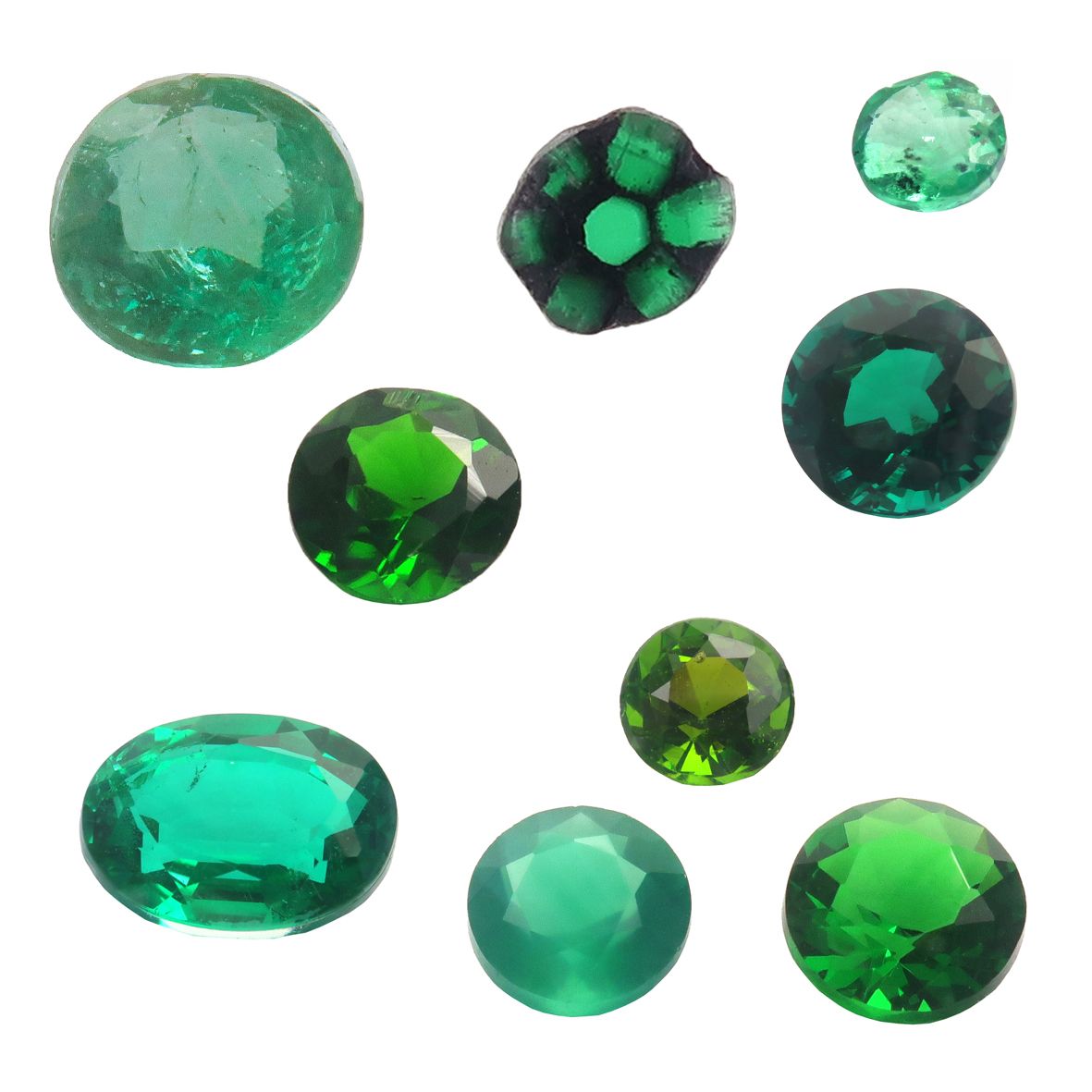
May - Emerald
Lush shades of green...
The green emerald always seems the perfect birthstone for May when plants are growing so fast & the countryside is so lush & green. Emerald is the green variety of the beryl family whose colour is caused by the presence of chromium & vanadium. Lighter stones are called green beryl but interestingly there is no definitive cut off point where one becomes the other…
The first known emerald mines were in Egypt dating from at least 330BC & they were a favourite stone of Cleopatra’s. Elizabeth Taylor was also a fan of emeralds – you can’t argue with their good taste.
Trapiche emeralds are very special stones because they consist of a central, hexagonal emerald crystal with 6 arms of a dark-coloured mix of minerals extending out from it & emerald crystals in between each arm. A rare & stunning gemstone, trapiche is Spanish for sugar mill & the dark arms in the emerald look like the spokes of the grinding wheels used to process sugarcane in South America where these stones are found.
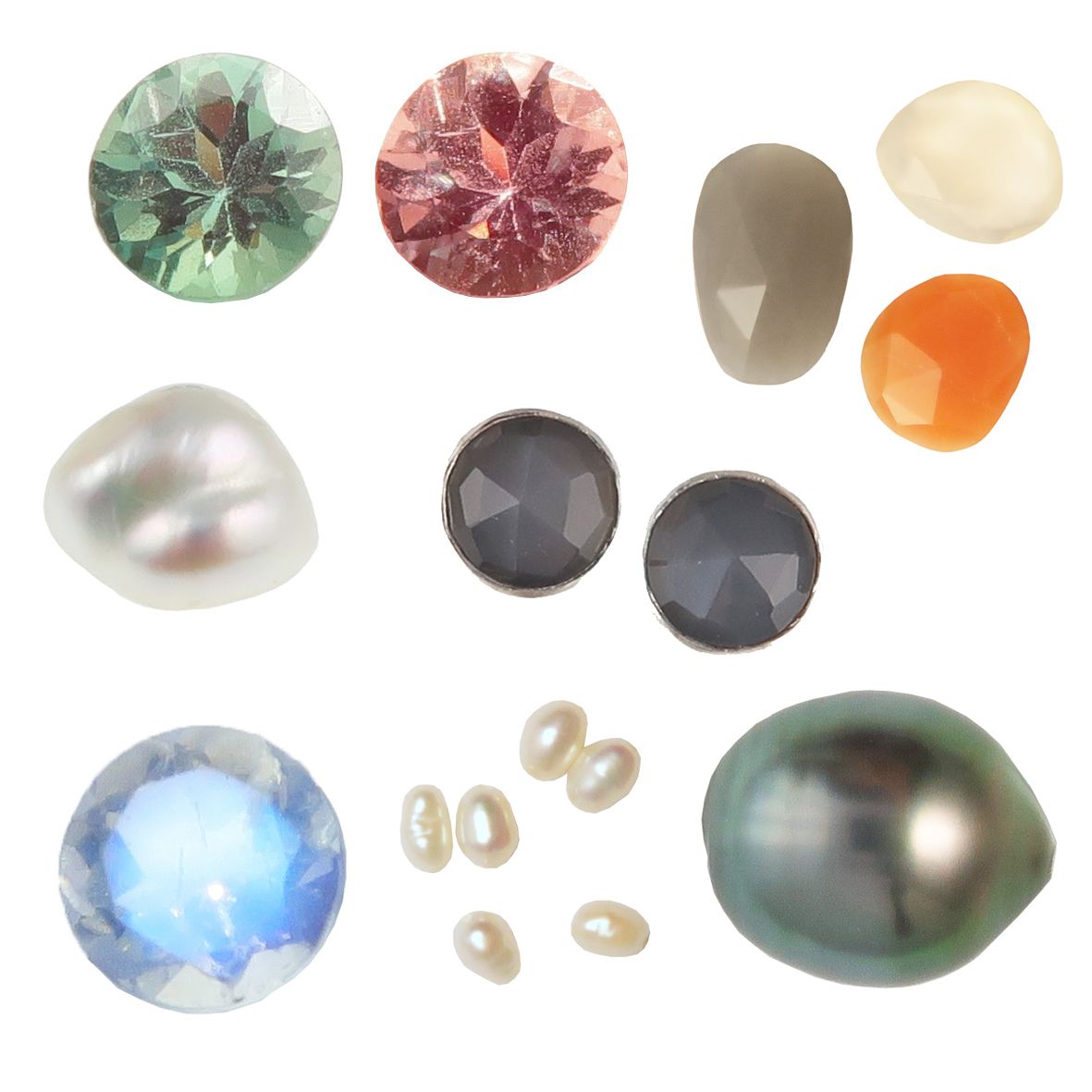
June - Moonstone, Pearl and Alexandrite
Three amazing gems to choose from...
Well aren’t June babies spoilt for choice! Pearls – organic gems, cultured or natural, freshwater or saltwater, round or baroque – what’s not to love. Favoured by Cleopatra, nowadays we can choose from a variety of colours & from tiny keshi pearls to large, exotic Tahitian or South Sea. Many cultures associate pearls with the moon while in Europe they symbolise modesty, chastity & purity & were a traditional wedding day gift for a bride. Natural pearls are incredibly valuable today as they are so rare & Pierre Cartier traded a double strand of natural pearls for a mansion on Fifth Avenue in New York in 1917…
Then there are the moonstones – members of the large feldspar family, the most widespread minerals in the Earth’s crust which can be found in white, grey, black, peach, brown & that amazing blue, all with that incredible adularescence optical effect caused by light scattering between microscopic layers of feldspar. Like pearls, many cultures associate this stone with the moon & moonlight. If you wanted to stretch the boundaries you could also include “rainbow moonstone” which is the marketing name of transparent feldspar that can show blue, yellow, orange and green…
As for alexandrite, the rare, expensive & very special green-to-red colour change variety of chrysoberyl sometimes described as “emerald by day, ruby by night”…. Originally discovered in 1830 in the Ural Mountains of Russia & named for the young Alexander II, its red & green colours mirrored those of the Imperial Russian flag. Very occasionally a very rare one may be found that displays cat’s-eye (chatoyancy) as well… any June baby who is lucky enough to own one of those – wow that would be a birthday gift to beat them all!
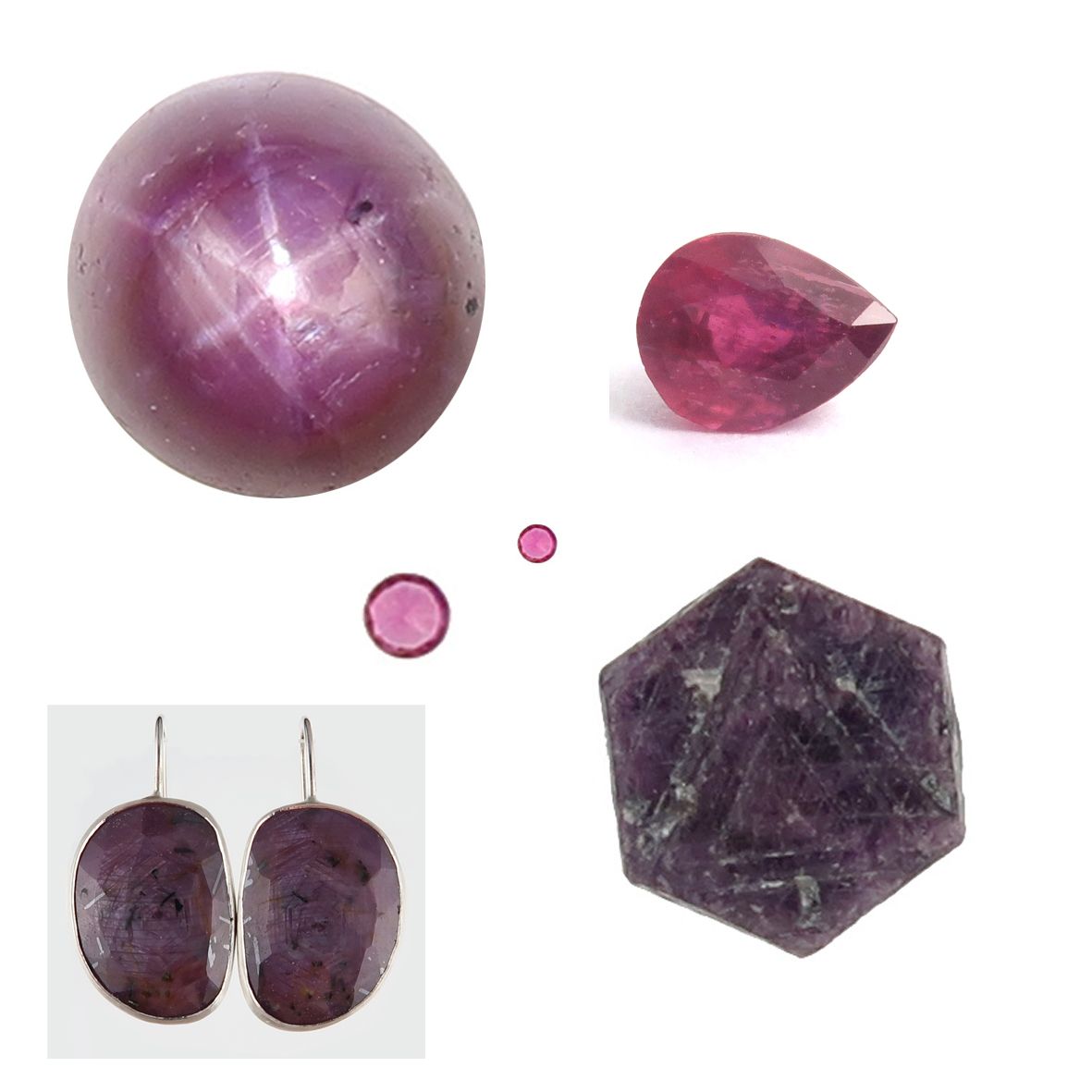
July - Ruby
Rich & passionate - most expensive of gems...
The red variety of corundum & second only to diamond in hardness, rubies are the most valuable variety of corundum & can command the highest price per carat of any coloured gemstone – lucky July babies! Traces of chromium within the crystal structure are responsible for the ruby’s colouration which can range from orangey to purplish red. Chromium is also responsible for its saturation of colour & any fluorescence which can also add to the intensity of their colour.
The most famous rubies tend to be those from Burma (Myanmar), prized for their amazing colour which is due to the lack of iron in their makeup. They are also known for their strong fluorescence, even in sunlight, which can increase the intensity of their colour.
Then there are the star rubies which display asterism where white light is reflected from numerous tiny, oriented needle-like inclusions… Whatever ruby a July baby owns, it will be a very special stone!
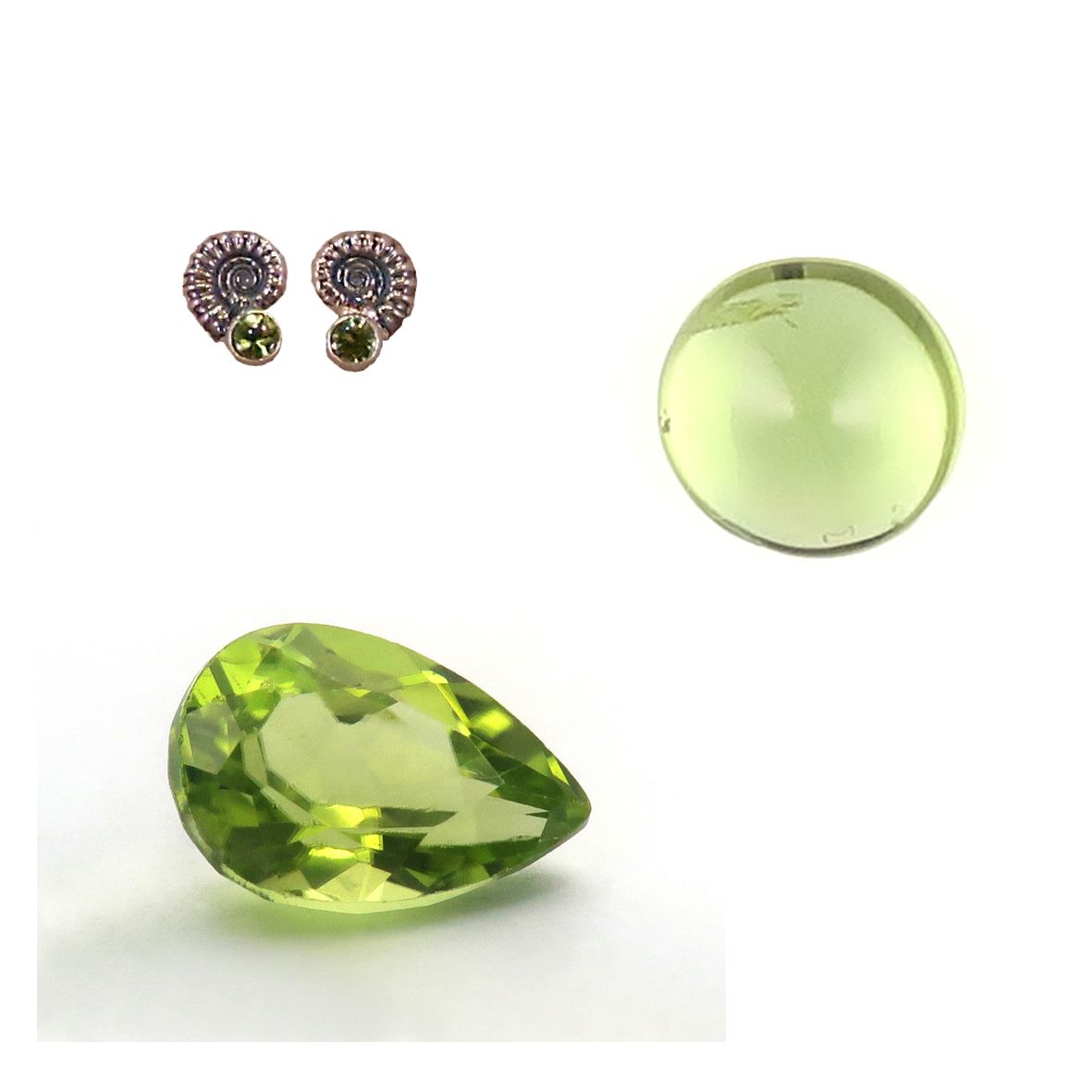
August - Peridot
Cosmic & volcanic...
These pale yellowish-green to deep green gem quality olivine gemstones are something special but August babies don’t have to choose an ordinary peridot stone, what about one that has dark green needle-like ludwigite inclusions… Even more extraordinary are the ones from a meteorite that has fallen to Earth, some of which are remnants of the solar system’s birth – it has even been found in comet dust…
Perfect for the long summer days, peridot has always been associated with light & was called the gem of the sun by the ancient Egyptians who mined peridot on the island of Zabargad. Some historians believe that Cleopatra’s emerald collection was actually peridot…
Like diamonds, most peridot formed deep within the Earth’s mantle & were transported to the surface by volcanic activity – this really is a very special gemstone & a special birthstone too.
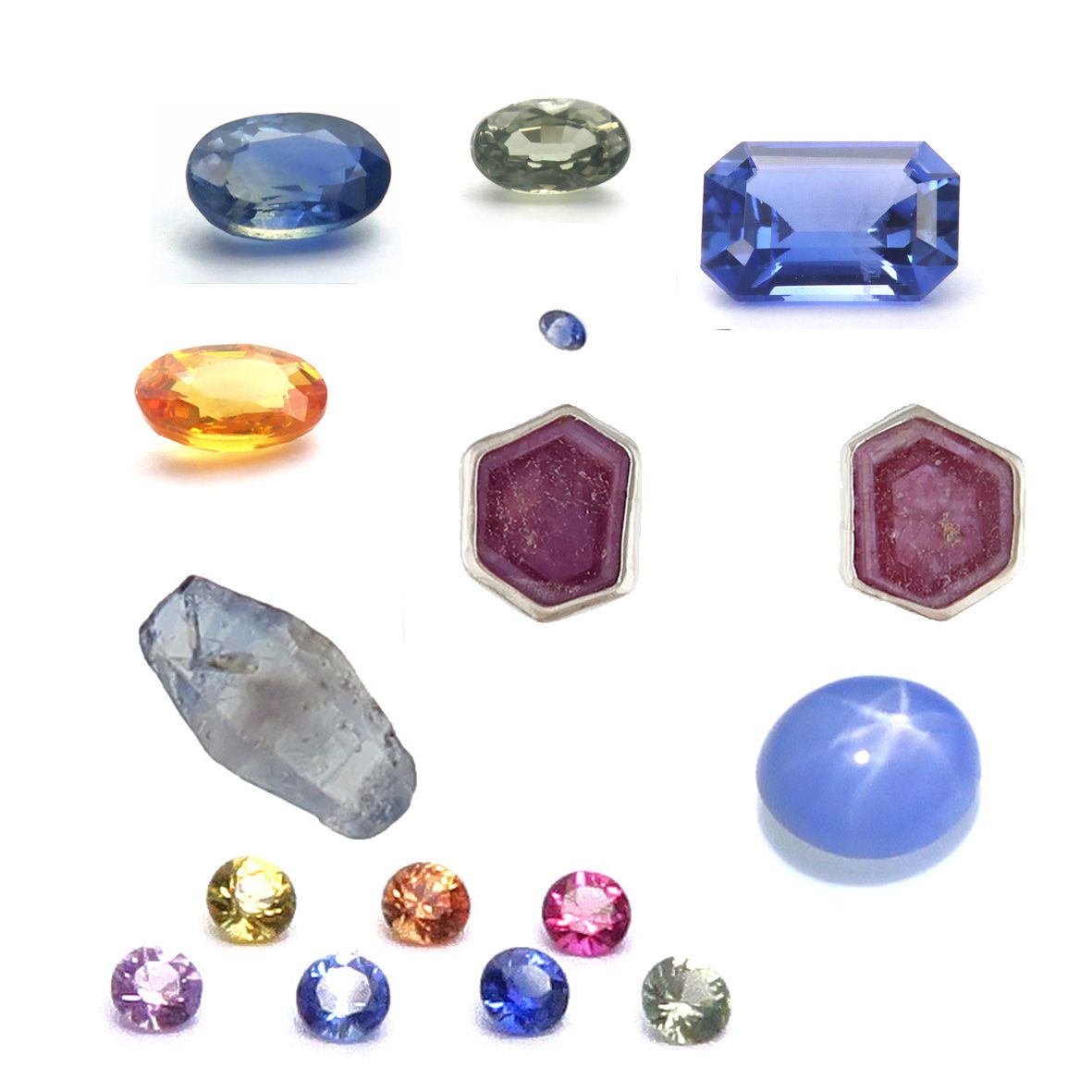
September - Sapphire
Choose any colour you like...
Traditionally September babies would have thought that blue sapphire was their birthstone, but sapphire is any colour of the corundum family other than red (unless they are treated but that’s a whole other book of info!). Red corundum are rubies although there is no definitive cut off point where pink sapphire becomes ruby or vice versa, this delineation is usually a historical or cultural definition.
This means that, as well as the blue sapphires, they can also choose colourless sapphires which were once used to imitate diamonds or from the fancy sapphire colours of violet, green, yellow, orange, pink, purple and red (not rubies but treated sapphires…) as well as the amazing pinkish-orange padparadscha, parti-coloured sapphires which display combinations of different colours or even colour change sapphires, most often changing from blue in daylight to purple under incandescent light… then there are star sapphires which display asterism where white light is reflected from numerous tiny, oriented needle-like inclusions…
It makes you wonder why a September baby would choose a blue sapphire when they could choose any of this rainbow – what a decision!
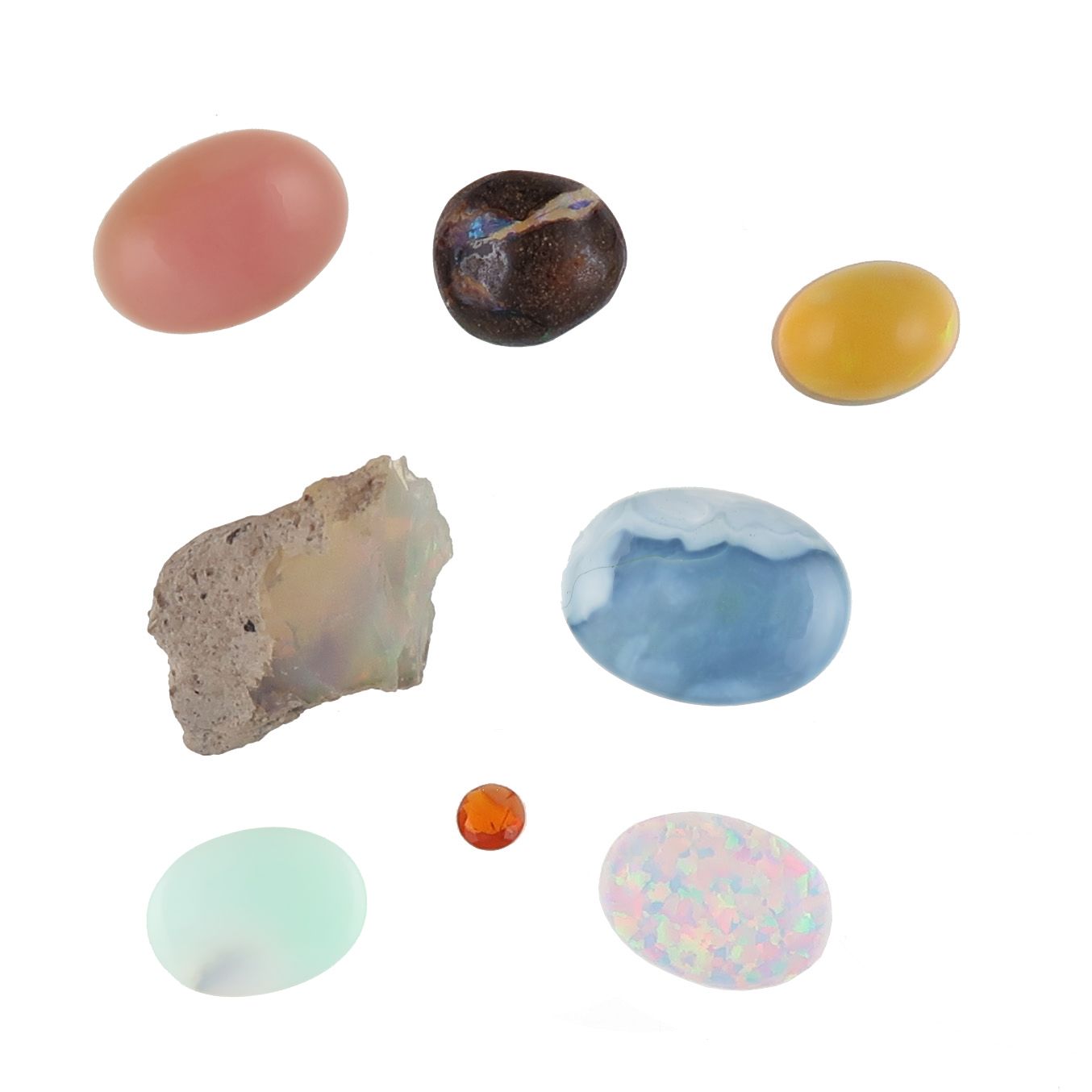
October - Opal
Can be a rainbow in a stone...
No other stone has the amazing play of colour displayed by precious opals, whether white or the truly stunning black opals. Precious opals were formed when much of the water from silica-rich water which had seeped into rocks evaporated, leaving solid deposits of silica (opal) in the cracks & between the layers of sedimentary rock. Opal can contain up to 20% water which does mean it needs to be treated with care & respect!
But if you prefer something a little less flamboyantly colourful, what about a juicy orange fire opal, a soft pink opal or a denim-coloured blue opal. Or if you fancy something really unusual, what about a piece of wood opal or opalized dinosaur bone…
While some may believe opals are bad luck & that this is a long-held superstition, it arose from the novel Anne of Geierstein (or The Maiden of the Mist), written by Sir Walter Scott in the 1800s. I do wonder if some of the belief may also have come from broken opals that had not been looked after properly… they don’t like to dry out!
October babies, enjoy your opals & know that if you look after them, they will be gorgeous & mesmerising for many years!
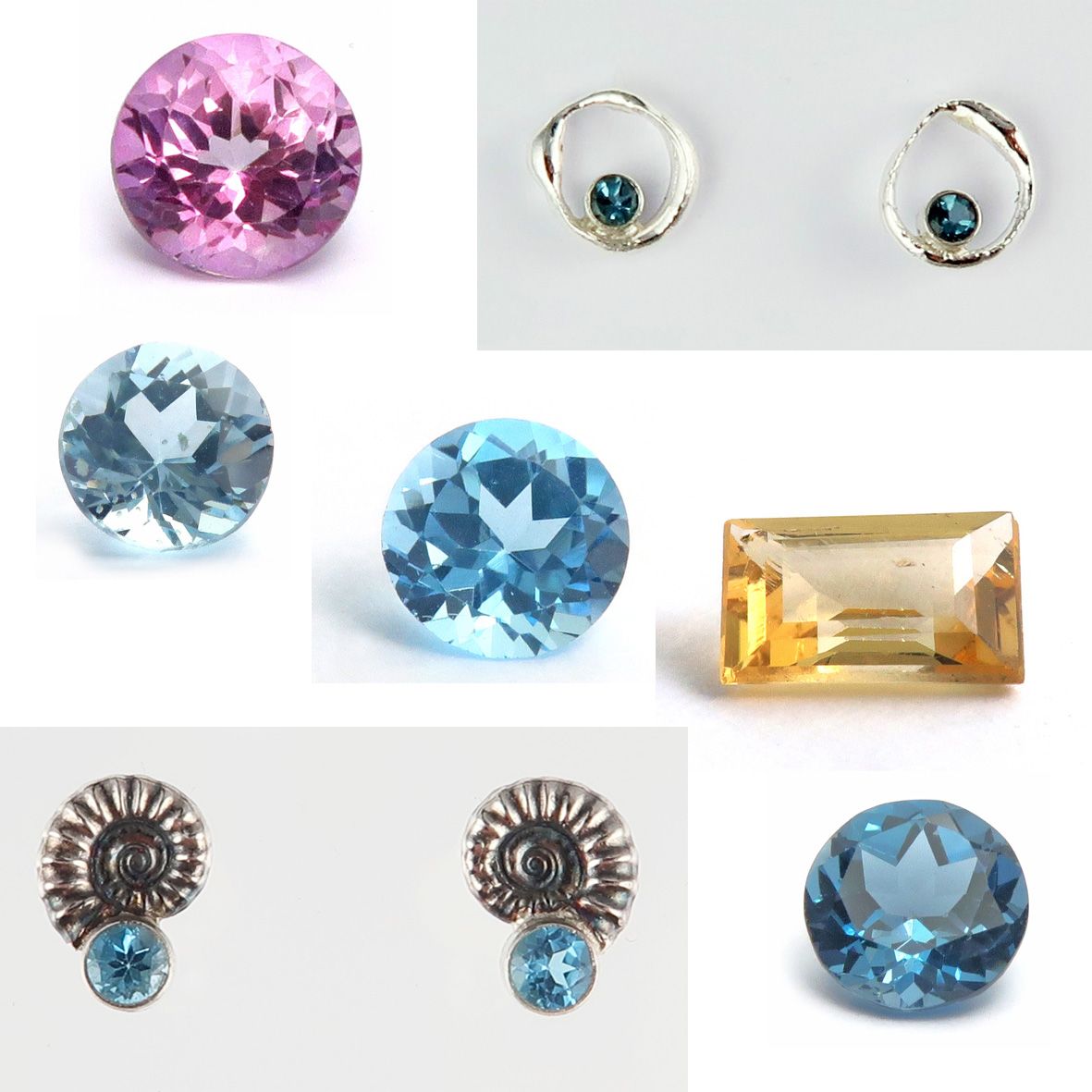
November - Topaz
Blue to imperial...
Another month of lucky birthday babies who have a whole host of colours to choose from with their birthstone, topaz. It can be found in blue, colourless, yellow, brown, pink, orange, green, purple or the very rare red! Many of these colours are produced by treating the gemstone including the blue varieties described as Sky blue, Swiss blue & London blue. The majority of blue topaz has been irradiated & heat treated to produce these beautiful blues, but rest assured, the treatment process is carefully regulated to ensure treated stones possess lower levels of radiation than naturally occurring, background radiation!
If you fancy something even more colourful, what about a “Mystic” topaz… these have had a coating such as titanium applied to the pavilion or lower facets of the stone which produces a rainbow of colours when you look down into the stone.
Why not take a birthday trip to the Natural History Museum in London & feast your eyes on the flawless, jaw droppingly beautiful, 9381 carat Ostro blue topaz. At 15 x 10.5cm it is the largest flawless, blue topaz in the world. You can walk all the way around it & admire its beauty (I have!).
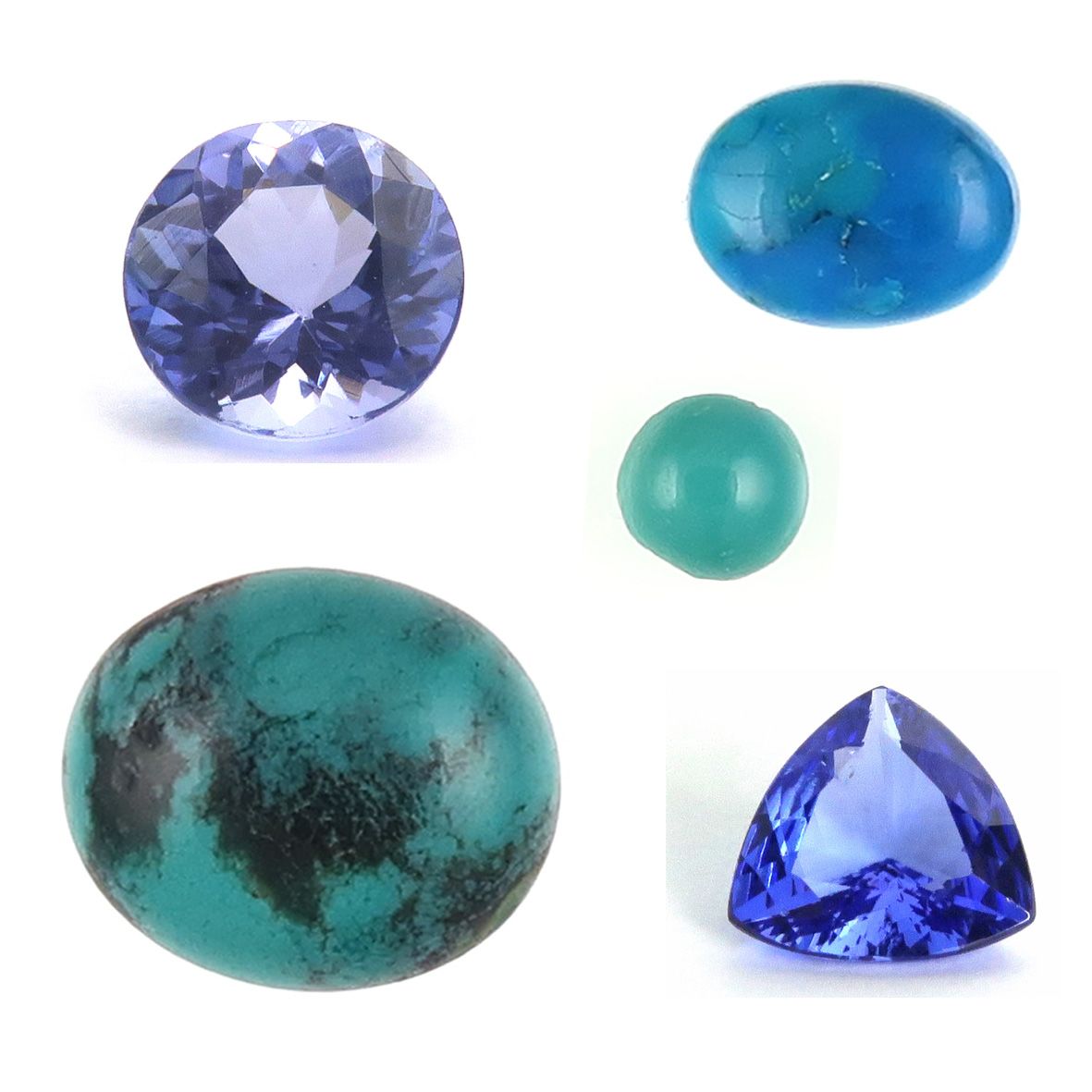
December - Turquoise and Tanzanite
Delicious blues & violet hues...
Where to start… turquoise has been found buried in Ancient Egyptian tombs & is among the world’s oldest jewellery - moving a long way forward in history (5,000 years, give or take), tanzanite was first discovered in 1967 in the Merelani hills at the foot of Mount Kilimanjaro.
Turquoise is only found in a few dry, barren regions of the earth & its vivid blues & greens are caused by the presence of copper. The best quality is described as robin’s-egg blue or sky blue & gorgeous examples of this were found at the Sleeping Beauty mine in Arizona. Stones with arguably more character have dark brown or black patterns of the host rock running through them.
Moving on to Tanzanite, while its mineral name is blue zoisite, it was named Tanzanite by Tiffany & Co for marketing purposes. Whatever you call it, this is a mesmerising violet-blue gemstone. Deeper, more saturated coloured stones may appear to change colour depending on the light source you view the stone in – appearing bluer in daylight and more violet-purple in incandescent light.
Rather than trying to choose between the two… why not have both! They work together so beautifully it would almost be rude not to!
